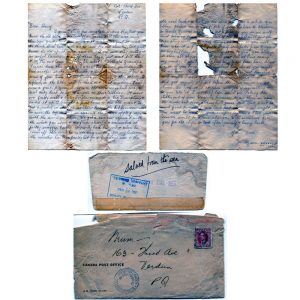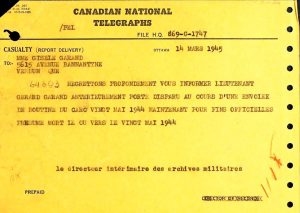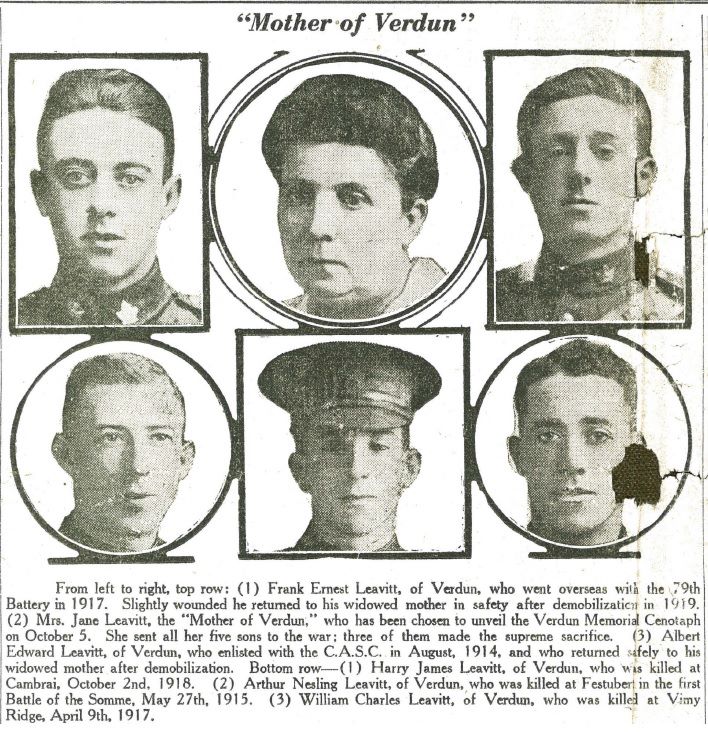Waiting and Grieving
During the world wars, many families, couples and friends experienced very difficult periods of waiting, solitude and grief. The mobilization of loved ones, disappearances, imprisonment, injury and death were added to the already long list of emotional suffering as a result of the war effort. Many documents that have been preserved, such as newspaper articles, letters and telegrams, attest to these painful moments. The work and activities of volunteers helped to provide support as others waited to get news, good or bad.
The Guardian newspaper reported that at least 171 Verdunites died during the Second World War, including 102 in the army, 43 in the Air Force and 26 in the Navy. The first two fatalities from Verdun succumbed during the torpedoing of the liner Athenia on September 3, 1939, including Hannah Baird, a member of the crew, believed to be the first Canadian to die during the conflict. In the summer of 1943, the names of five to ten dead and wounded were listed in the newspaper each week. These pages were read with great apprehension. It was not unusual for a family to lose more than one member during the war. Little data is available for the First World War, but it is estimated that several hundred Verdunites lost their lives.
Verdun’s social network and churches sought to comfort the bereaved. Verdun was a tightly knit community. People knew their neighbours very well and this translated into collective support for families in mourning.




